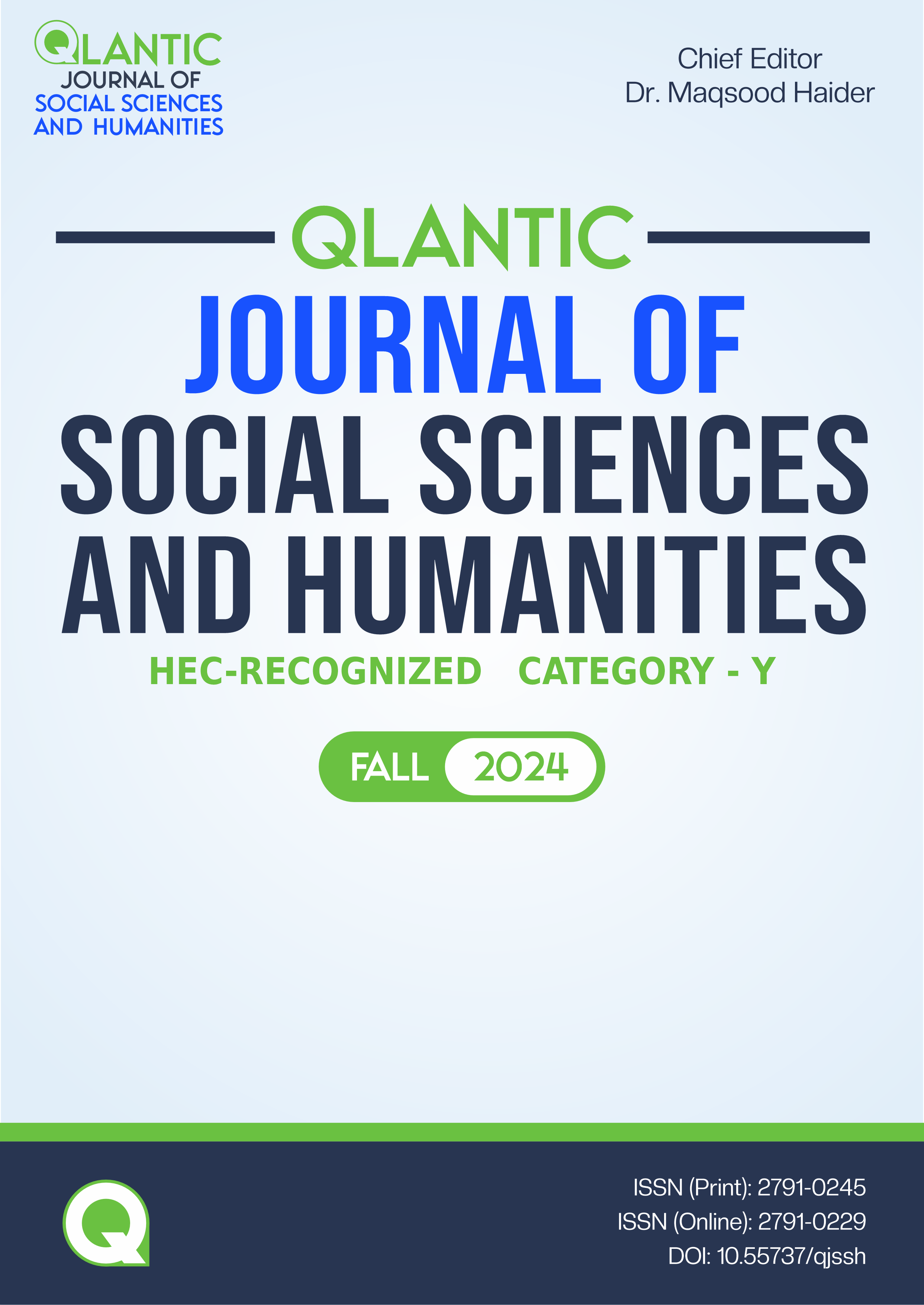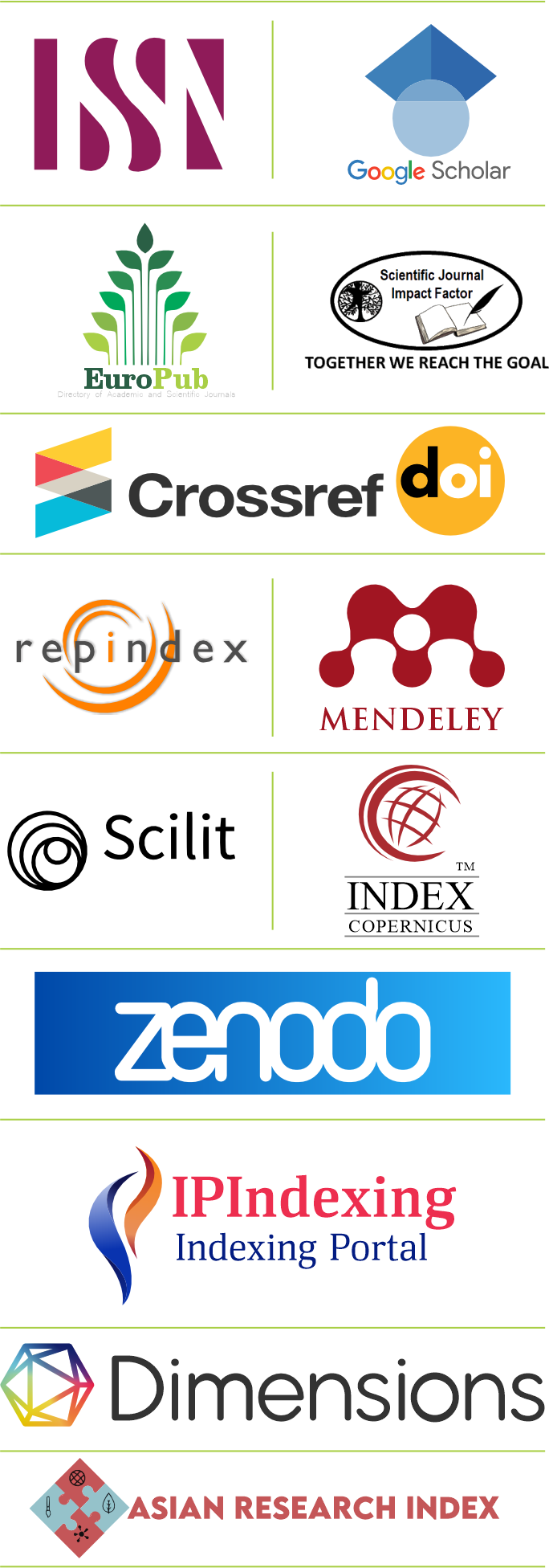Measuring Digital Financial Inclusion Across the Globe: A New Multidimensional Index
DOI:
https://doi.org/10.55737/qjssh.v-iv.24276Keywords:
Digital Financial Inclusion Index, Two Stage PCA, IMF, World Bank, Financial InstitutionsAbstract
In this paper, a new index of digital financial inclusion is developed using the access, usage, and availability dimensions of digital financial inclusion. The two-stage principal component analysis is applied to develop an index using the IMF financial access survey data for 68 countries from the year 2014-2021. The countries are further divided into four groups using World Bank income classifications. The new index proposed in this study covers 68 countries based on continuous data from the IMF FAS survey. The index is a contribution to the ongoing literature on digital finance and will be used as a device to measure digital financial inclusion. The results show that the high-income countries are technologically advanced and have a higher ranking in digital financial inclusion while the upper middle (UMIC) and lower-middle-income countries (LMIC) are making steady progress with respect to the digitization of the financial sector while low-income countries are less digitally inclusive due to lack of digital infrastructure. Moreover, they have the problem of a lack of digital finance data. International financial institutions i.e. The World Bank, IMF, and national financial institutions such as central banks should work towards a vibrant and digitally inclusive financial sector.
References
Azwar, A. (2017). INDEX OF SYARIAH FINANCIAL INCLUSION IN INDONESIA. Buletin Ekonomi Moneter Dan Perbankan, 20(1), 99–126. https://doi.org/10.21098/bemp.v20i1.726
Cámara, N., & Tuesta, D. (2014). Measuring financial inclusion: A muldimensional index. BBVA Research Paper, (14/26). https://doi.org/10.2139/ssrn.2634616
Cattell, R. B. (1966). The Scree Plot Test for the Number of Factors. Multivariate Behavioral Research, 1, 140-161. https://doi.org/10.1207/s15327906mbr0102_10
Demirgüç-Kunt, A., & Klapper, L. F. (2012). Measuring financial inclusion: The global findex database. World bank policy research paper, (6025). https://papers.ssrn.com/sol3/papers.cfm?abstract_id=2043012
Demirgüç-Kunt, A., & Singer, D. (2017). Financial inclusion and inclusive growth: A review of recent empirical evidence. World Bank Policy Research Working Paper, (8040). https://papers.ssrn.com/sol3/papers.cfm?abstract_id=2958542
Demirgüç-Kunt, A., Klapper, L., Singer, D., & Ansar, S. (2022). The Global Findex Database 2021: Financial inclusion, digital payments, and resilience in the age of COVID-19. World Bank Publications.
Demirgüç-Kunt, A., Klapper, L., Singer, D., Ansar, S., & Hess, J. (2020). The Global Findex Database 2017: Measuring financial inclusion and opportunities to expand access to and use financial services. The World Bank Economic Review, 34(Supplement_1), S2-S8. https://doi.org/10.1093/wber/lhz013
Digital Financial Inclusion. (2015, March 10). CGAP. https://www.cgap.org/research/publication/digital-financial-inclusion
Fintech: Financial Technology Industry Stats for 2022 | Tipalti. (2022.). https://tipalti.com/fintech-stats-for-2022
Geng, Z., & He, G. (2021). Digital financial inclusion and sustainable employment: Evidence from countries along the belt and road. Borsa Istanbul Review, 21(3). https://doi.org/10.1016/j.bir.2021.04.004
world bank. (2017). Home | Global Findex. Worldbank.org. https://globalfindex.worldbank.org/
Jiang, X., Wang, X., Ren, J., &Xie, Z. (2021). The nexus between digital finance and economic development: Evidence from China. Sustainability (Switzerland), 13(13). https://doi.org/10.3390/su13137289
Kaiser, H. F. (1960). The application of electronic computers to factor analysis. Educational and psychological measurement, 20(1), 141-151. https://doi.org/10.1177/001316446002000116
Khera, P., Ng, S., Ogawa, S., & Sahay, R. (2022). Measuring digital financial inclusion in emerging markets and developing economies: a new index. Asian Economic Policy Review, 17(2), 213-230. https://doi.org/10.1111/aepr.12377
Khera, P., Ogawa, M. S., & Sahay, M. R. (2021). Is digital financial inclusion unlocking growth?. International Monetary Fund.
Lauer, K., & Lyman, T. (2015). Digital financial inclusion: Implications for customers, regulators, supervisors, and standard-setting bodies. Washington, DC: Consultative Group to Assist the Poor (CGAP).
Li, Y., Wang, M., Liao, G., & Wang, J. (2022). Spatial spillover effect and threshold effect of digital financial inclusion on farmers’ income growth—based on provincial data of China. Sustainability, 14(3), 1838. https://doi.org/10.3390/su14031838
Loukoianova, M. E., Yang, Y., Guo, M. S., Hunter, M. L., Jahan, M. S., Jamaludin, M. F., & Wu, M. Y. (2018). Financial Inclusion in Asia-Pacific. International Monetary Fund.
Lyons, A., Kass-Hanna, J., & Greenlee, A. (2020). Impacts of Financial and Digital Inclusion on Poverty in South Asia and Sub-Saharan Africa. SSRN Electronic Journal, 1(217), 1–39. https://doi.org/10.2139/ssrn.3684265
Mialou, A., Amidzic, G., & Massara, A. (2017). Assessing countries’ financial inclusion standing—A new composite index. Journal of Banking and Financial Economics, 2(8), 105-126. https://www.ceeol.com/search/article-detail?id=643150
Nazir, M. R., Tan, Y., & Nazir, M. I. (2021). Financial innovation and economic growth: Empirical evidence from China, India and Pakistan. International Journal of Finance & Economics, 26(4), 6036-6059. https://doi.org/10.1002/ijfe.2107
Ozili, P. (2018). Impact of digital finance on financial inclusion and stability. Borsa Istanbul Review, 18(4), 329-340. https://doi.org/10.1016/j.bir.2017.12.003
Ozili, P. K. (2021, October). Financial inclusion research around the world: A review. In Forum for social economics (Vol. 50, No. 4, pp. 457-479). Routledge.
Rekha, G., Rajamani, K., & Resmi, G. (2021). Digital financial inclusion, economic freedom, financial development, and growth: Implications from a panel data analysis (No. 1244). ADBI Working Paper Series.
Sahay, M. R., Cihak, M., N'Diaye, M. P., Barajas, M. A., Mitra, M. S., Kyobe, M. A., ... & Yousefi, M. R. (2015). Financial inclusion: can it meet multiple macroeconomic goals?. International Monetary Fund.
Sahay, M. R., von Allmen, M. U. E., Lahreche, M. A., Khera, P., Ogawa, M. S., Bazarbash, M., & Beaton, M. K. (2020). The promise of fintech: Financial inclusion in the post COVID-19 era. International Monetary Fund.
Sarma, M. (2012). Index of Financial Inclusion–A measure of financial sector inclusiveness. Centre for International Trade and Development, School of International Studies Working Paper Jawaharlal Nehru University. Delhi, India.
Sarma, M. (2016). Measuring financial inclusion for Asian economies. Financial inclusion in Asia: Issues and policy concerns, 3-34.
Sarma, M., & Pais, J. (2011). Financial inclusion and development. Journal of international development, 23(5), 613-628. https://doi.org/10.1002/jid.1698
Tuesta, D., Sorensen, G., Haring, A., & Camara, N. (2015). Financial inclusion and its determinants: the case of Argentina. Madrid: BBVA Research. https://www.findevgateway.org/sites/default/files/publications.pdf
Downloads
Published
Issue
Section
License
Copyright (c) 2024 Muhammad Idrees, Dr. Muhammad Tahir, Dr. Muhammad Asim Afridi

This work is licensed under a Creative Commons Attribution-NonCommercial 4.0 International License.





